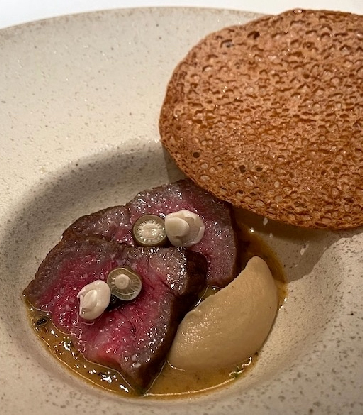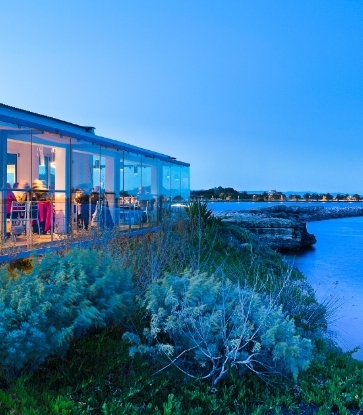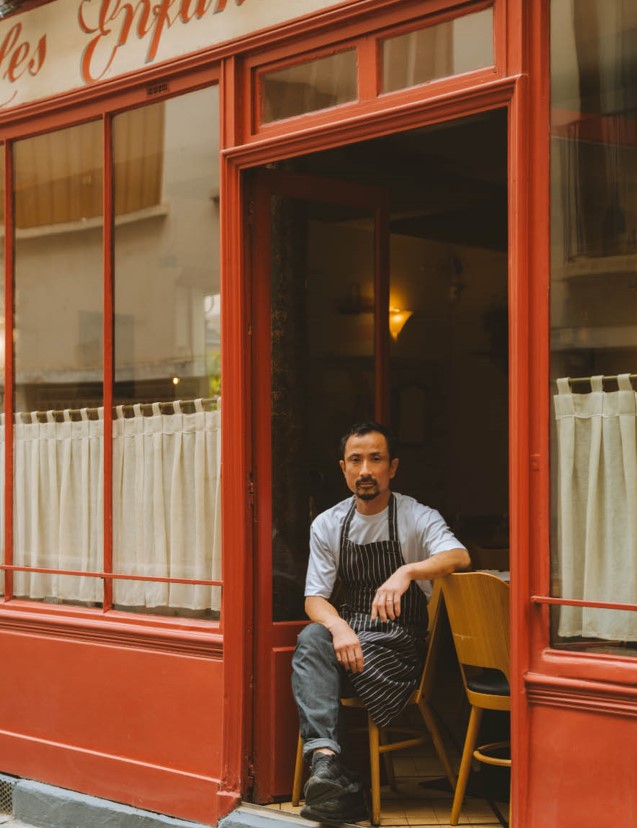Known to be the hipper area of Singapore when it comes to the crowd and the chow, Tanjong Pagar, Amoy, and Telok Ayer form a hotspot that's laden with many MICHELIN-Starred, Bib Gourmand, and MICHELIN-listed restaurants that span a myriad of cooking styles and cuisines.
Head here if you're in the mood for a special meal in a restaurant setting or simply want to splurge on delicious food. Here are the restaurants in the area recommended by our MICHELIN Guide inspectors.
The enchanting Cloudstreet is named after the Tim Winton book, which is fitting as Australia is where Sri Lankan chef Rishi Naleendra learnt his trade and developed his considerable skills. Diners at his restaurant are taken on a thrilling culinary journey, courtesy of his impressive creativity and artistry. He has also gathered together a service team who clearly share his pride and passion. When it comes to dessert, diners move to a room upstairs.
Sourcing the finest ingredients is something of an obsession for Kyoto-born Kazuhiro Hamamoto. And it’s not just his nigiri, whether nodoguro or chutoro, that shows his care and craftsmanship — the dishes served before it, like spiny lobster with uni, or smoked meji-makuro, prove just as memorable. There is only one sitting at lunch and dinner at the handsome, curved counter, so you’ll need patience and perseverance when trying to secure a booking.
Lerouy may have moved locations, but its signature circular counter still affords the best views into the open kitchen. The omakase menus change bimonthly, with a choice between "petit" and "grand" on weekdays. The Alsatian owner-chef, who has worked in some famous kitchens around the world, chooses to take a slightly less formal approach to the French cooking, punctuated by Alsatian influences. The wine list features unique choices from small-batch organic wineries.
The bright room is furnished in a cream and birch colour scheme, imparting calmness and warmth. The Korean chef Louis Han named his restaurant Nae:um, meaning a fragrance that evokes memories. Food culture and recollections of his home country are at the core of his episodic menu that changes with seasons. Innovative courses are precisely executed and presented in an ethereal, refreshing manner, but have inklings of their Korean roots.
Championing a concept of “crossroads” cooking, the chef explores how cultures, ingredients, and geographical locations intersect with a menu that unfolds like a narrative. Motifs such as vanilla and turmeric are repeated throughout, and lighter flavours build up to a tour-de-force climax. The marble table and conjoining chef’s counter are the preferred front row seats to interact with and watch the chefs work.
The Alsace-born chef takes diners on a culinary journey to his homeland with authentic Alsatian food, like choucroute garnie and tarte flambée aux escargots. International dishes, such as Malaysian rotisserie free-range chicken and a nice variety of aged steaks from around the world, are also popular. Service is attentive and helpful. Start or end the night with an apéritif or digestif on the terrace or at the bar.
Relocated to Tras Street in 2021, this friendly restaurant serves authentic Indonesian cooking in a room enhanced by artefacts and bamboo-styled furnishings. The signature whole grilled squid Cumi Bali — succulent and springy in texture — gives the restaurant its name. It is particularly delicious in their prized homemade sauce made with a myriad of natural spices. Nasi Kunyit is a rice dish jazzed up by 11 spices such as turmeric, cinnamon and pandan leaves.
This lively wine bar concept is another brainchild of the chef-owner behind Cloudstreet and Kotuwa. The décor is on trend with a retro 1970s look. The wine list is extensive and well-choreographed, with a slight bias towards older vintages. Pair your wine with snacks and small plates hallmarked by precise execution, beguiling presentations and pronounced flavours. In particular, the chicken liver éclair with date and Madeira is not to be missed.
This is one of the most popular little gems in Chinatown and it’s easy to see why. The narrow house offers dining on three floors; art by local artists add colour and character. In business for over 20 years, regulars keep returning for its aromatic cooking like Ngo Heong that delivers all the subtle and authentic flavours of Peranakan, as well as addictive sweets like Chendol. Better still, prices are as generous as the portions — that are great for sharing.
“Vegetarian cuisine for non-vegetarians” is how Phyllis and Wood describe their longstanding Thai and Peranakan restaurant. They wanted diners to feel they were eating meat even though they weren’t, and this they achieved through an understanding of textures and flavours and the clever use of soy product and tofu. With dishes like tom yam soup and classic assam pedas, the food is full of flavour as well as being good for you — and it’s great value, too.
After renovation, this relaxed and friendly restaurant run by the same family as its namesake in Barcelona has doubled in size. Catalan classics like the cannelloni are prepared the same way as they were back in the 19th century, and their tapas portion sizes allow diners to sample a wider variety. Recommendations include lamb shoulder with trinxat and mint pesto. The wine list has a great Spanish selection that’s available at a reasonable price.
Its name is a pun on how cooking revolves around the charcoal grill, brazier, and tandoor. Whether you sit at the counter or in a booth, the chefs put on a show that is visible from all seats. Two tasting menus and a vegetarian menu are offered. Dishes are rooted in different regions of India, but are reimagined and reborn over coals and fire. The distinctive smoky flavour and layering of spices works magic, resulting in a delicate balance.
Chicken curry and sardine puffs are too good to be missed.

Where to Stay:
Singapore’s Chinatown is one of the world’s most unique neighbourhoods, and it’s here, in a row of five well-preserved 19th-century shophouses, that you’ll find an equally memorable hotel: Duxton Reserve, a spectacular French-accented boutique hotel with interiors by one of the originators of the boutique-hotel movement, the British designer and hotelier Anouska Hempel.
It’s won awards for its restoration, and inside, it’s just as impressive — decked out in elegant black, white, and gold, it’s both a retro fantasy and a thoroughly modern hospitality experience. And while it’s aesthetically unique, it draws on quite a lot of hard-earned expertise — it’s owned by the Garcha Group and operated by Marriott under the Autograph Collection banner.
The result is something that’s playful and surprising yet thoroughly professional; the rooms and suites are theatrical and romantic, and equipped with all the modern must-haves, from British-made Naturalmat organic mattresses to Bose sound systems and Diptyque bath products.
Book a stay at Duxton Reserve here.

What to Do:
After a delicious meal, head over to Duxton Plain Park for a quaint walk. The park comprises a linear green tract that used to be part of an old railway line and is surrounded by shophouses. Positioning itself as a "green" back alley, Duxton Plain Park makes for a peaceful respite that is flocked by both the area's residents and visitors who are in need of a quick breather. A notable feature of the park is a solitary Muslim tomb that has attracted curious passerby.
Another location that's worth one's time is The Pinnacle @ Duxton's Skybridge. Not a lot of people know that despite being in a housing development, the Skybridge is open to the public from 9 a.m. to 9 p.m. daily. Located on the property's 50th floor, visitors can enjoy a breathtaking view of Singapore's landscape for a small fee.






















